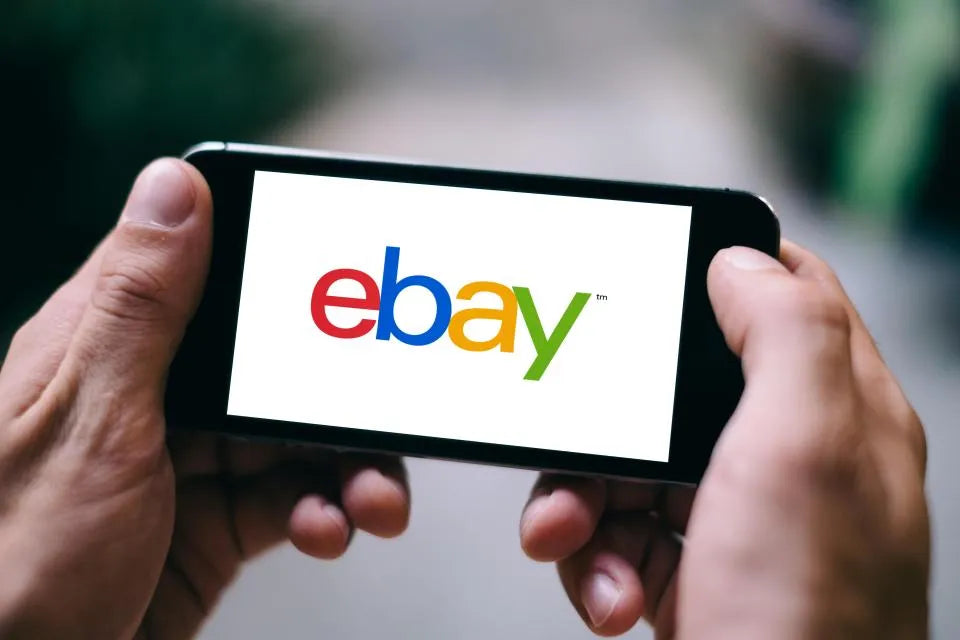
eBay's New Payment and Fee Structure: What Sellers and Buyers Need to Know
Table of Contents
- Key Highlights:
- Introduction
- Expedited Payments for Sellers
- Revised Buyer Protection Fees
- Comparative Analysis: eBay vs. Other Marketplaces
- Enhancing User Experience: Buyer Protection Features
- How to Spot Valuable Items on eBay
- Conclusion: The Future of Online Selling
Key Highlights:
- Starting August 6, eBay will expedite payments to qualifying sellers, allowing them to receive funds within 24 hours of a sale.
- The platform has also reduced its Buyer Protection fee, affecting how costs are structured for buyers while shifting some financial responsibilities away from sellers.
- These changes align eBay with trends in the online marketplace industry, where buyer fees are becoming more common as platforms evolve.
Introduction
In a bid to enhance user experience and streamline operations, eBay has announced significant changes to its payment and fee structures that are set to take effect shortly. Beginning August 6, sellers who meet specific criteria will see their payments processed within 24 hours of a sale, a notable improvement over the current two-day wait after delivery confirmation. Alongside this development, eBay has also revised its Buyer Protection fees, reducing the burden on sellers while implementing a new fee structure for buyers. These adjustments not only aim to improve seller satisfaction and retention but also reflect broader trends within the online retail landscape, where platforms are increasingly looking to balance costs between buyers and sellers.
Expedited Payments for Sellers
eBay's decision to expedite payments is a strategic move designed to incentivize more sellers to engage with the platform. Under the new policy, sellers who have completed at least ten sales totaling £150 or more within the past five years and have maintained a clean dispute record will be eligible to receive their payments within 24 hours of a sale.
This change is particularly beneficial for small and medium-sized enterprises (SMEs) and individual sellers who often rely on prompt cash flow to manage their operations. The previous system required sellers to wait two days after delivery confirmation to access their funds, which could create cash flow challenges, especially for those with limited financial reserves.
Criteria for Expedited Payments
- Sales History: Sellers must have completed a minimum of ten sales totaling at least £150 in the last five years.
- Dispute Resolution: A seller must not have more than two unresolved disputes in the previous year, ensuring that the expedited payment process is reserved for reliable sellers.
This new payment model is expected to enhance seller confidence in eBay as a viable platform for conducting business, thereby potentially increasing overall sales volume on the site.
Revised Buyer Protection Fees
In tandem with the payment changes, eBay has also restructured its Buyer Protection fee, which has drawn mixed reactions from its user base. Previously, the platform faced backlash after introducing fees for buyers purchasing from private sellers, a move many customers viewed as unfair. In response, eBay has reduced the fixed amount of this fee significantly—from 75p to just 10p—starting July 17, 2025.
Details of the New Fee Structure
The recent adjustments to the Buyer Protection fee include the following:
- Flat Fee: A fixed charge of £0.10 per item purchased.
-
Percentage Fees:
- 7% on the item price up to £20.
- 4% on any portion of the item price from £20 to £300.
- 2% on any portion of the item price from £300 to £4,000.
- No fee for any portion of the item price exceeding £4,000.
For instance, if a buyer purchases an item priced at £5, they will incur a fee of 45p—10p as the flat rate plus 35p (7% of £5). Conversely, a purchase of £1,500 would result in a total fee of £36.70, calculated based on the tiered structure.
Implications for Buyers and Sellers
These fee adjustments shift more financial responsibility onto buyers while providing sellers with a clearer understanding of their potential earnings. By including the fee structure directly in the item price, eBay aims to prevent surprises at checkout, enhancing transparency for buyers. Additionally, eBay is set to launch a live calculator tool, allowing buyers to estimate their fees before completing a purchase, thereby improving the buying experience.
Comparative Analysis: eBay vs. Other Marketplaces
eBay is not alone in its shift towards a buyer-centric fee model. Other platforms, such as Vinted and Depop, have made similar changes, reflecting a broader industry trend. Vinted introduced a buyer protection fee in 2016, which replaced seller fees, while Depop implemented a buyer fee system in April 2024.
Vinted
Vinted’s approach involves a fixed fee ranging from 30p to 80p for orders under £500, in addition to a percentage fee based on the sale price. Sellers on Vinted receive payments within two working days of a completed order, making it a competitive option for quick transactions.
Depop
Depop charges buyers a fee of up to 5% of the purchase price, plus a fixed amount that can reach £1 per item. The payment timeline for sellers on Depop is slightly longer, with funds typically released within ten working days or 2-3 days post-delivery.
These comparisons illustrate how eBay's changes are aligned with ongoing shifts in the online marketplace ecosystem, as platforms increasingly tailor their fee structures to improve buyer engagement and seller profitability.
Enhancing User Experience: Buyer Protection Features
The Buyer Protection program is a significant aspect of eBay's commitment to customer satisfaction. Under this initiative, buyers enjoy several advantages:
- 24/7 Customer Service: Buyers can access support at any time, ensuring their concerns are addressed promptly.
- Secure Transactions: All transactions are encrypted, providing a secure purchase environment.
- Payment Timeline for Private Sellers: Previously, payments to private sellers were processed only after the delivery was confirmed. The new expedited payment timeline, effective August 6, allows buyers to feel more secure in their purchases knowing that sellers are incentivized to complete transactions efficiently.
How to Spot Valuable Items on eBay
For sellers looking to maximize their profits on eBay, understanding how to identify valuable items is crucial. The platform offers tools and resources for sellers to assess the worth of their goods effectively.
Researching Item Value
A straightforward method for gauging item value involves searching for similar items on eBay and filtering results by "sold listings." This allows sellers to see what similar items have sold for, helping them price their goods competitively. For instance, categories such as rare coins, vintage toys, and collectibles can yield significant profits if properly researched.
Utilizing Online Resources
Sellers can also benefit from specialized online tools and databases. For example, coin valuation websites like Coin Hunter and resources like Change Checker’s scarcity index can help sellers understand market trends and potential profits.
Conclusion: The Future of Online Selling
eBay's recent changes reflect a proactive approach to meet the evolving needs of both sellers and buyers in the competitive online marketplace. By expediting payments and adjusting fee structures, eBay aims to foster a more engaging and satisfying experience for its users. As the industry continues to adapt, these changes may set a precedent for other platforms to follow, ultimately reshaping how online transactions are conducted.
FAQ
What are the new payment terms for eBay sellers?
Starting August 6, sellers who have completed at least ten sales totaling £150 or more in the past five years and have no more than two unresolved cases in the last year will be paid within 24 hours of a sale.
How have fees changed for eBay buyers?
eBay has reduced the fixed Buyer Protection fee from 75p to 10p and introduced a tiered percentage fee structure for purchases, which varies based on the item price.
How does eBay's fee structure compare to other platforms?
Similar to eBay, other platforms like Vinted and Depop have also shifted to charging buyers fees instead of sellers, with varying structures and payment timelines for sellers.
What should I do if I believe my item is valuable?
Research similar items on eBay using the "sold listings" filter to determine a competitive price. For particularly rare items, consider consulting experts or valuation services.
How can buyers estimate their fees on eBay?
eBay is set to release a live calculator tool that allows buyers to input item prices and view applicable fees before making a purchase.
POWER your ecommerce with our weekly insights and updates!
Stay aligned on what's happening in the commerce world
Email Address
Handpicked for You

08 September 2025 / Blog
How to Avoid Greenwashing: Rules, Real-World Examples, and a Practical Playbook for Honest Environmental Claims
Read more
08 September 2025 / Blog
Klaviyo 2025: How its AI-Driven CRM Transforms Shopify Email Marketing and the Customer Experience
Read more
08 September 2025 / Blog


